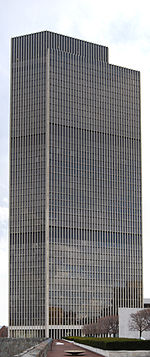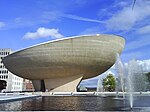New York State Women Veterans Memorial

The New York State Women Veterans Memorial is located on Madison Avenue in Albany, New York. It commemorates the role of women in military service.The ground-breaking ceremony for the memorial was held in June 1998 and presided over by Governor George Pataki; the memorial was unveiled in December of the same year.The memorial comprises three panels, each with a bronze bas-relief sculpture. The central panel features Liberty on the crown of England, holding the state flag aloft in her right hand. The other two panels show images of women veterans from various eras. The text on the memorial reads "Dedicated to the Women of New York State for their War Time Military Service in the Defense of this Nation".
Excerpt from the Wikipedia article New York State Women Veterans Memorial (License: CC BY-SA 3.0, Authors, Images).New York State Women Veterans Memorial
Madison Avenue, City of Albany
Geographical coordinates (GPS) Address Nearby Places Show on map
Geographical coordinates (GPS)
| Latitude | Longitude |
|---|---|
| N 42.64929 ° | E -73.76267 ° |
Address
Women Veterans' Memorial
Madison Avenue
12208 City of Albany
New York, United States
Open on Google Maps









